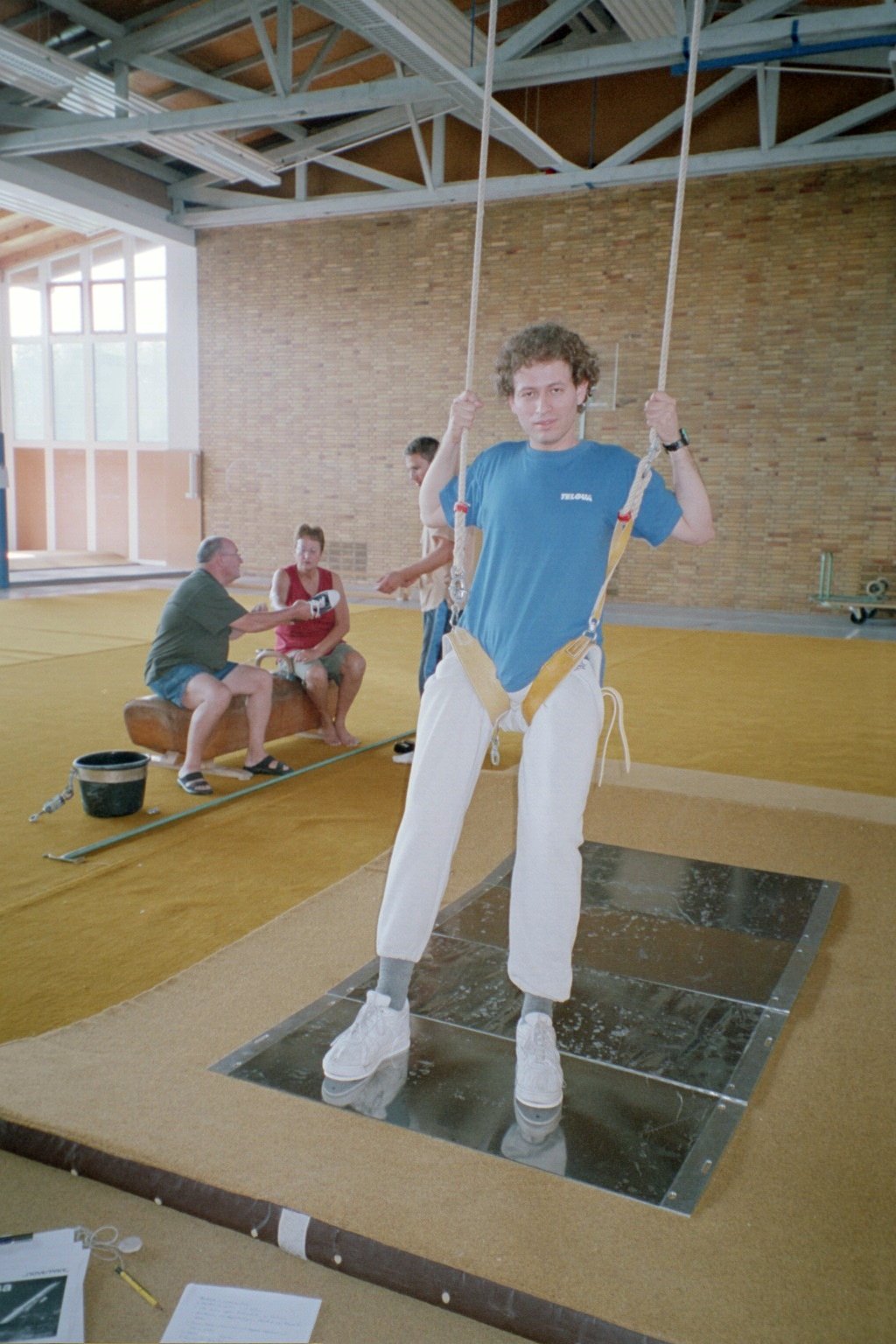Basic idea:
In weightless space every item needs to be fixed to a surface, otherwise it will float around freely. This naturally applies also to the astronauts themselves. In these days every item in a spaceship, e. g. the ISS (International Space Station) has to be fixed to the walls and other "tray surfaces" with velcro, and the astronauts anchor themselves with footloops when they want to avoid drifting off while working.
However, the velcro has a big disadvantage: It gets dirty through floating dust, which is on one hand unhygienic and on the other hand impairs the holding force, that means that some time later it can't hold the items in place any more.
The footloops are as well not always practical: An astronaut can only fix himself at a place where footloops are attached, but if he wants to get into a position in between this doesn't work or he must hold on to something else.
To remember: Alone pressing the keys of a computer keyboard is enough to let a person float off in zero-g!
Now we thought that there should be other possibilities to hold things and people in place, indeed by means of magnetic force. As far as we know, this possibility has not been tried yet.
We want to retrieve this and test it on the parabolic flight, if it is a suitable method to fix items magnetically on a metal surface and as well if it is possible to anchor oneself and walk in zero gravity with the help of magnetic shoes.
Especially for the application at extravehicular activities (EVA) this possibility would be great, because there it is not yet possible for the astronauts to anchor themselves securely with their feet, unless they are on the end of the space shuttle's manipulator arm.However, only one astronaut can occupy this position, the other works free floating, only secured by a wire. If there could be ferromagnetic plates fixed to important points of the station and the astronauts would be equipped with the magnetic shoes, so is our theory, they could have their feet safely attached and have the hands free for working.
We built some kind of "walkway", on which we want to make walking tests in zero-g with shoes with embedded magnets in the soles.
Besides this we are taking another experiment with us, but this one doesn't need any attention by us during the flight: we will to test the newly developed long-term ECG monitor of the UAF Offenburg for its usability in weightless conditions. This device consists of a plaster with integrated ECG electrodes and a recorder. Altogether this device weighs only 19 g and can be operated by everyone. By the way it is then very interesting to get to know how every participant reacts to the parabolas and the gravity changes, what should be seen on the basis of the later evaluated ECG data.
The floor test
To test how it could be with the magnetic walking in zero-g, and if the magnets might be too weak or too strong, we performed a floor test in the gym of the Turnverein Offenburg. With the help of a longe - this is a belt normally worn around the waist to practice somersaults or secure artists in the circus - we wanted to keep the persons suspended. But first we found out that wearing the longe belt around the waist was very uncomfortable because we were hanging in it with the full body weight and it was hard to breathe (normally this is not the case, because the belt only acts as a safety against falling). So we first changed the arrangement, we took a second longe belt, put one on each rope and fixed the belts around the legs in the manner of a parachutist to use them as a seat.
|
|
This arrangement provides a two-dimensional simulation of weightlessness, in the horizontal directions , the vertical is added only in real zero-g, because the longe ropes are fixed to a length which is dependant on the experimenters height. A further lack in the simulation is the fact that the longe ropes are fixed at one point at the ceiling which is not moveable. This caused a pendulum effect which prevented a walking of more than two steps. To equalize this, we then lifted the end plates a little at the ends to adapt them to the pendulum curve.
|
|
|
|
Here I have a drawing of the experiment. We built some kind of walkway made of aluminium plates with a cover of thin sheet metal.
|


